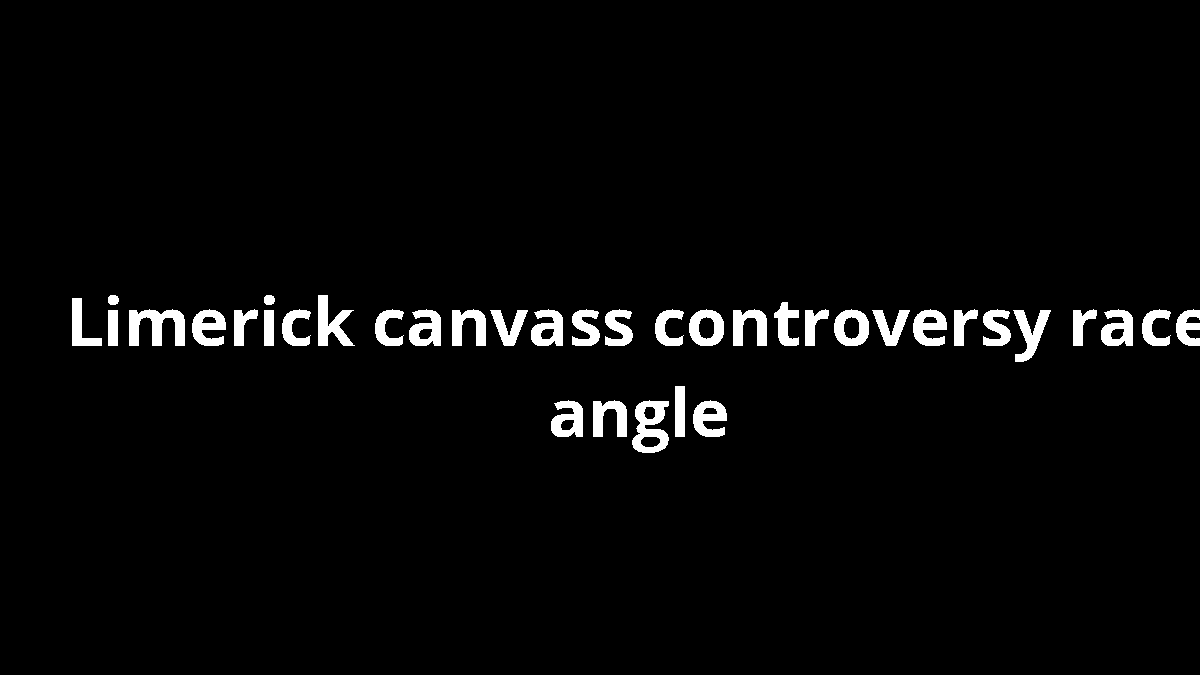Canvass confrontation overshadows Limerick campaign
Tensions flare as canvassing collides with protest
On a sunlit Saturday in Limerick, the city eyes were fixed on a canvassing corner where politics collided with street life. A powerfully charged moment unfolded when a candidate’s remarks were interrupted by a challenger, producing a scene some witnesses called the defining bite of campaign season. The Limerick canvass controversy quickly became shorthand for a weekend when public space turned into a tense stage. Observers described the Limerick canvass controversy as a test of composure, crowd management, and the candidate’s ability to project calm under pressure. For rugby fans, used to high-stakes scrums and late changes, the moment underscored a common tension: passion drives engagement, but friction can derail a message. The Limerick canvass controversy thus entered the national conversation as a test of democratic process and public safety, drawing attention to the city’s tradition of spirited debate.
Eyewitness accounts shape the narrative
Eyewitness accounts varied, but the core thread was consistent: a canvassing moment in a busy public space can alter the rhythm of a campaign. In the hours that followed, campaign organizers emphasized safety measures and the need for clear lines of communication with residents, while critics warned about the optics of a confrontation in a city renowned for its hospitality. The Limerick canvass controversy resurfaced on social feeds, where debates about fairness and safety quickly outpaced policy detail. Journalists noted the role of crowd behavior in shaping impressions and discussed how such incidents travel beyond local borders to become topics of national conversation. The Limerick canvass controversy thus remains a reference point for campaigns navigating public scrutiny and accountability, as rugby fans and sports commentators alike watch closely.
Connolly interrupted during Palestinian solidarity address
A moment captured on the city square
Connolly’s interruption during the Palestinian solidarity address was a moment that drew national attention and sparked debate about space, protest, and the role of media in elections. Witnesses described the moment as sharp, with a clash that felt personal as well as political. The incident fed into the broader narrative of the Limerick canvass controversy as a symbol of how public moments can swing perceptions in real time. Rugby audiences may find parallel tension in how teams respond to on-field incidents: discipline, message control, and composure under pressure can determine outcomes beyond a single play. Media outlets, including BBC Sport Rugby, offered quick analysis of the event alongside sports coverage, underscoring how the public square can resemble a crowded stadium where every action is amplified. The Limerick canvass controversy continued to resonate in coverage.
Gallagher backs Humphreys as campaign tightens
Cross-candidate signals in the final stretch
Seán Gallagher’s public endorsement of Heather Humphreys added a new layer to a campaign landscape that already felt relentless. Supporters framed the move as practical political calculus, while opponents viewed it as a risk to narrative coherence. In tight races, cross-candidate signals can reshape perceptions on the ground and alter how voters prioritize issues. Analysts say these shifts can matter almost as much as policy specifics, especially in urban districts where turnout matters most. The Limerick canvass controversy has been cited as a reminder that message discipline and timing are essential when alliances emerge late in the cycle. As the race approaches the final weekend, party volunteers and local organisers recalibrate their talking points to align with evolving voter sentiment. The Limerick canvass controversy remains part of the dialogue around strategy.
Support dynamics shape voter perception
Supporters, volunteers, and neighborhood networks interact to shape decisions at the door and in online debates. The way endorsements are explained, and the credibility of messengers, can influence turnout in meaningful ways. In communities with strong rugby culture, the idea of fair play and clear accountability translates into voter expectations as well. Journalists have highlighted how social momentum from canvassing can spill into polling days, shaping how voters interpret last-minute messages. The Limerick canvass controversy has become a touchstone for questions about trust, transparency, and accountability in a high-stakes race. Rugby audiences, who follow process and discipline on the field, may see a relatable parallel in how campaigns manage ambiguity as coverage broadens. The Limerick canvass controversy thus informs readers about the human elements behind electoral dynamics.
Harris: election not over until results are in
The unfinalized tallies and their symbolism
Tánaiste Simon Harris reminded the public that an election is not truly decided until the numbers are counted. the point was simple, yet it carried weight in minutes of debate and in late-night broadcasts. Political analysts argued that silence after the vote can be as influential as loud claims before it, a dynamic that mirrors the patience fans show before a final whistle. In this climate, the Limerick canvass controversy appeared again as a case study of how dramatic moments influence memory and perception, even as polls close. The public square in Limerick, once a stage for canvassing, became a focal point for discussions about process, legitimacy, and the interplay of sport-like intensity with civic duty. The Limerick canvass controversy left an imprint on how viewers calibrate post-event narratives.


